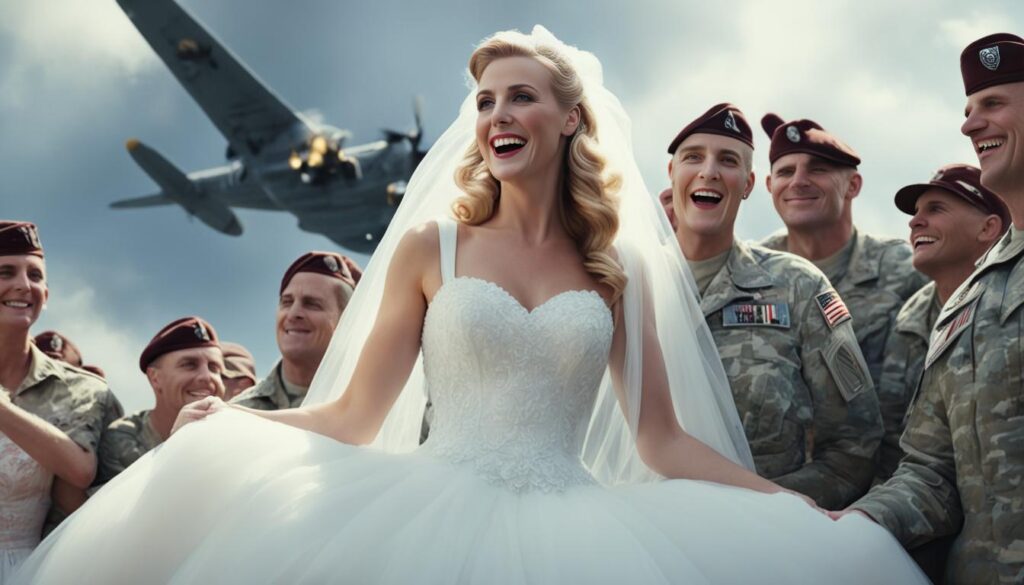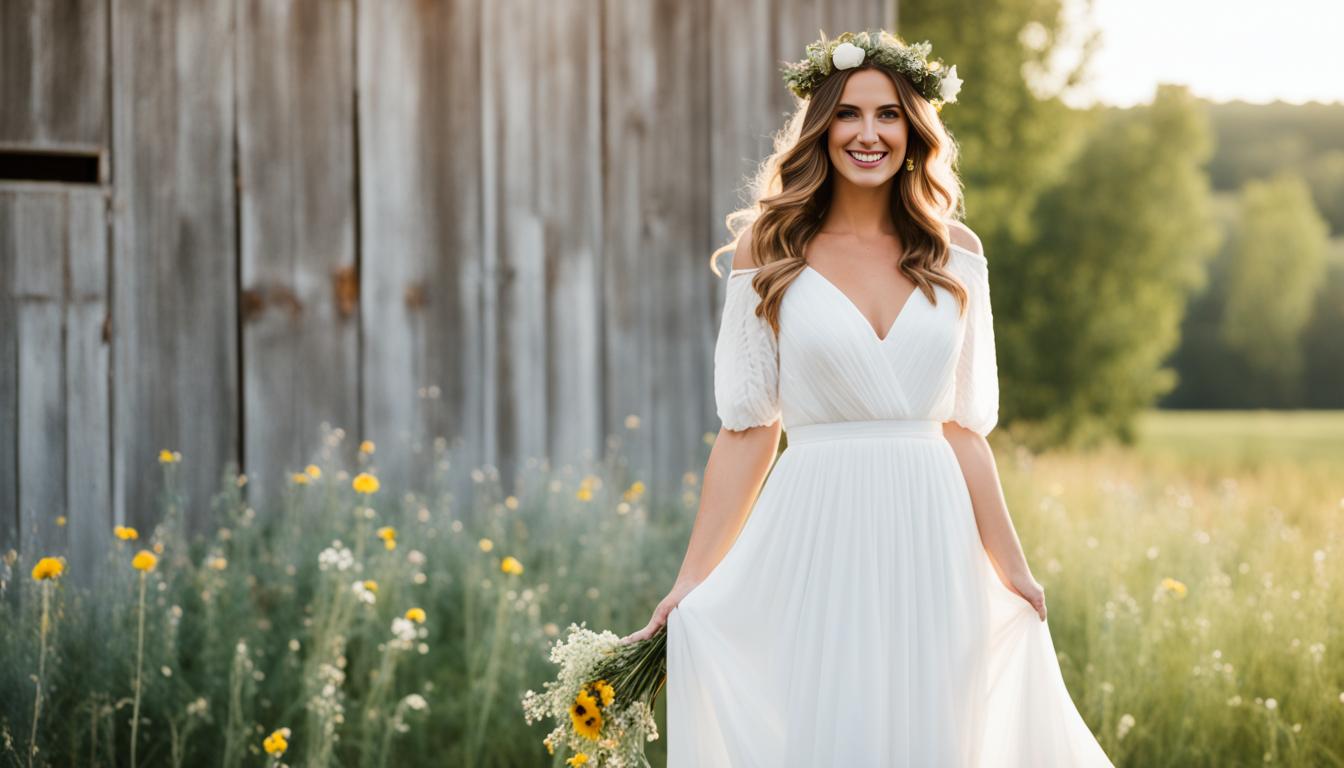World War II brides showed amazing creativity by making wedding gowns from surplus parachute fabric. Wartime shortages made traditional bridal fabrics hard to find. These women found a clever way to create their dream dresses.
Parachute makers had strict standards. They rejected any parachutes that didn’t meet their high requirements. The rejected parachutes were made of top-quality white nylon or silk fabric. This gave brides a unique chance to make stunning wedding dresses.
Each parachute wedding dress has its own story. Some brides got the fabric as gifts from their military fiancés. Others found it through friends or family in the parachute industry.
Every bride added her own special touch to her gown. Many got help from skilled seamstresses. Some even sewed the dresses themselves.
Key Takeaways
- WWII brides showcased resourcefulness by creating wedding dresses from surplus parachute fabric
- Wartime shortages made traditional bridal fabrics scarce, prompting brides to seek alternative materials
- Rejected parachutes provided high-quality white nylon or silk fabric suitable for crafting beautiful gowns
- Brides acquired parachute fabric through various means, including gifts from fiancés or family members in the industry
- Each parachute wedding dress was unique, reflecting the bride’s individual style and creativity
Wartime Weddings: Brides Get Creative with Parachute Fabric
World War II brought unique challenges to wartime weddings. Creative brides found resourceful solutions to material shortages and rationing. They used parachute fabric to create stunning wedding dress alternatives.
Janet Gleason, a Navy WAVES member, met Reo Arland Casper, a US Marine Paramarine. Their love grew despite the war’s challenges. They planned to marry after the conflict ended.
Janet’s commanding officer gifted her a Japanese silk parachute. She used her skills to design and sew her own dress. The result was a unique and elegant creation.
Janet and Reo eloped in Dillon, Montana, on October 31, 1945. She wore the parachute fabric wedding gown she had crafted. Their story shows the resilience of couples during wartime.
Many couples found innovative ways to celebrate their love. They overcame challenges and created memorable weddings despite the era’s difficulties.
WWII Parachute Wedding Dresses: Heartwarming Stories of Love and Bravery
World War II saw love bloom amid chaos. Brave soldiers relied on lifesaving parachutes for safety. These parachutes became dream fabrics for wartime brides.

Major Claude Hensinger’s story stands out. His B-29 was hit during a Japan raid in August 1944. Hensinger bailed out, using his parachute as a pillow while awaiting rescue.
In 1947, Hensinger proposed to Ruth with his lifesaving parachute. Ruth turned it into her wedding gown. She crafted the skirt herself, creating a shorter front and graceful train.
Claude and Ruth married on July 19, 1947. Ruth wore her unique parachute wedding dress. The sentimental gown became a family heirloom.
Later, their daughter and son’s bride wore the dress. It now resides in the Smithsonian. The gown symbolizes love’s power and wartime ingenuity.
Many WWII love stories feature parachute wedding dresses. These gowns symbolize resilience and hope. They remind us that love thrives even in dark times.
Preserving the Legacy of Parachute Wedding Gowns
World War II parachute wedding gowns are preserved in museums across the United States. These dresses show the resourcefulness of wartime brides. They turned life-saving materials into cherished wedding attire.
Museums display these unique pieces of wartime memorabilia. They help future generations learn about couples’ sacrifices during this difficult time. These gowns serve as powerful symbols of love and bravery.
The Smithsonian Museum houses Ruth Hensinger’s wedding dress. It’s made from the parachute that saved her husband’s life during the war. This dress represents their love and shared challenges.
The Cradle of Aviation Museum on Long Island showcases Evelyn Braet’s wedding gown. It’s crafted from her fiancé George’s tattered parachute. George was an army pilot who survived enemy fire in Europe.
Their daughter, Kate, sees the dress as a symbol of love and hope. These gowns have profound significance for the families who cherish them. They represent the strength of couples who faced war together.
Museums play a vital role in preserving these remarkable artifacts. They educate visitors about the personal stories behind each parachute wedding gown. These tales of love and sacrifice inspire future generations.
The legacy of parachute wedding gowns reminds us of human resilience. Even in dark times, love and creativity can triumph. These gowns leave a lasting impact on our shared history.

Leave a Reply